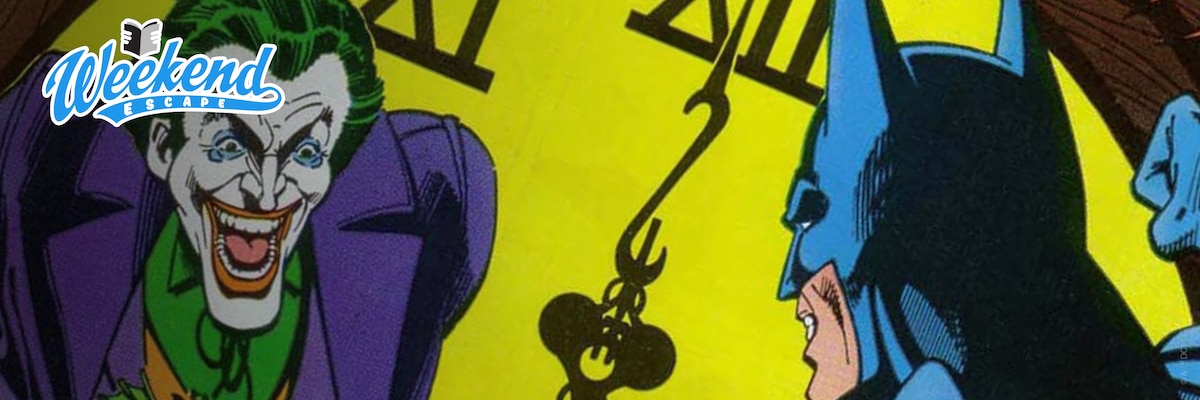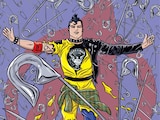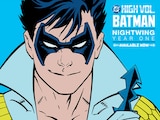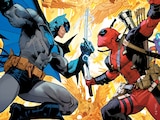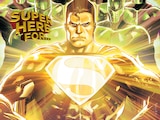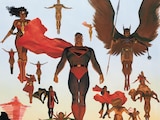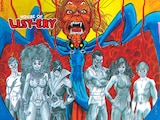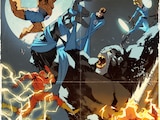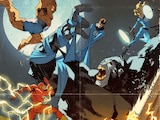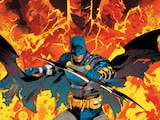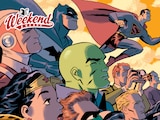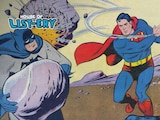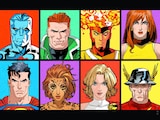Each Friday, we'll be letting a different DC.com writer share what they'll be reading over the weekend and why you might want to check it out. Here's this week's suggestion for a perfect Weekend Escape!
Little things often slip through the cracks, disregarded and forgotten. But every once in a while, their value is recognized and extends far beyond their size, like Steve Englehart and Marshall Rogers’ run on Detective Comics. It consists of a mere six comic book issues—far shorter than the runs of such acclaimed Batman teams as Alan Grant and Norm Breyfogle or Scott Snyder and Greg Capullo. But the quality of the Englehart/Rogers run has captured the hearts and minds of comic fans and creators since it launched in 1977. It continues to do so today.
Collectively named “Strange Apparitions” since its first trade paperback publication in 1999, this seminal comic run is available and easily read on DC UNIVERSE INFINITE, and serves as both a perfect read for new Batman readers and a definitive take on the Bat for longtime devotees. Here’s why…
The Premise:

A lean, muscular, propulsive storyline, Batman: Strange Apparitions opens—much like the later “Knightfall”—with a Bruce Wayne weakened from battle, setting him up for defeat at the hands of one of his oldest foes, Professor Hugo Strange (unseen since December 1940’s Detective Comics #46). Strange drugs the Dark Knight, steals both Bruce Wayne and Batman’s identities, then auctions off his secret. Along the way he runs afoul of a new character—Gotham City councilman/crime boss Rupert Thorne. Batman survives to battle the Penguin and a reinvented Deadshot (who’d been MIA since 1950’s Batman #59). Then the Joker returns to Gotham, madder than ever, in Detective Comics #475’s unforgettable “The Laughing Fish.” The run climaxes with a battle between Caped Crusader and clown. Along the way, Bruce Wayne is depicted as having, for the first time, an actual sex life, and a new leading lady who’s his equal in spirit and intellect (a rarity in the comics of those days): Ms. Silver St. Cloud.
Let’s Talk Talent:

Writer Steve Englehart had previously demonstrated his ability to cut to the core of a character on Marvel’s Captain America and The Avengers, when he was recruited by DC publisher Jenette Kahn to write Justice League of America and Detective Comics. Strange Apparitions marked his first pairing with young artist Marshall Rogers. The two would later collaborate on Mister Miracle and a Madame Xanadu one-shot, before reuniting decades later at DC on Batman: Dark Detective (featured in Legends of the Dark Knight: Marshall Rogers). But it’s Strange Apparitions in which their combined powers are at their height. Throughout, Rogers’ pencils are spectacularly complemented by the inks of newcomer Terry Austin, who’d later win acclaim for his partnership with John Byrne on X-Men and Superman.
A Few Reasons to Read:
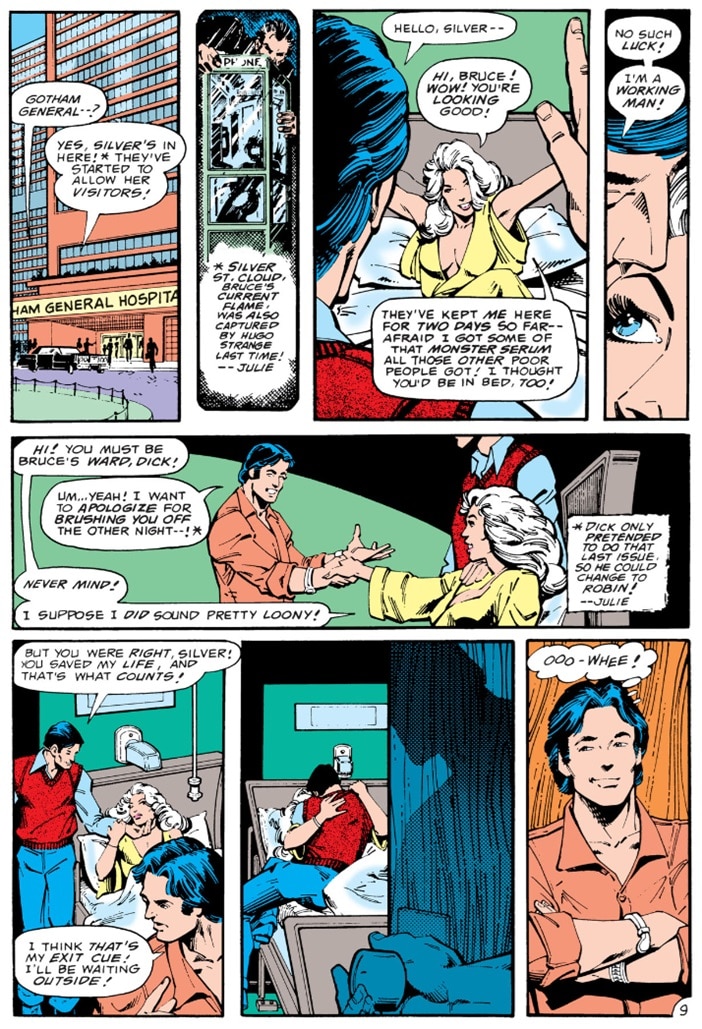
- When producer Michael Uslan began developing the film that became 1989’s Michael Keaton-starring Batman, he took his cue from Strange Apparitions and had Englehart write several treatments based on his work. According to Englehart, his heavily homicidal Joker helped to inform Jack Nicholson’s character.
- No one drew Batman quite like Marshall Rogers. The elongated ears, the ever-swirling cape—they would influence later artists like Kelley Jones and Todd McFarlane.
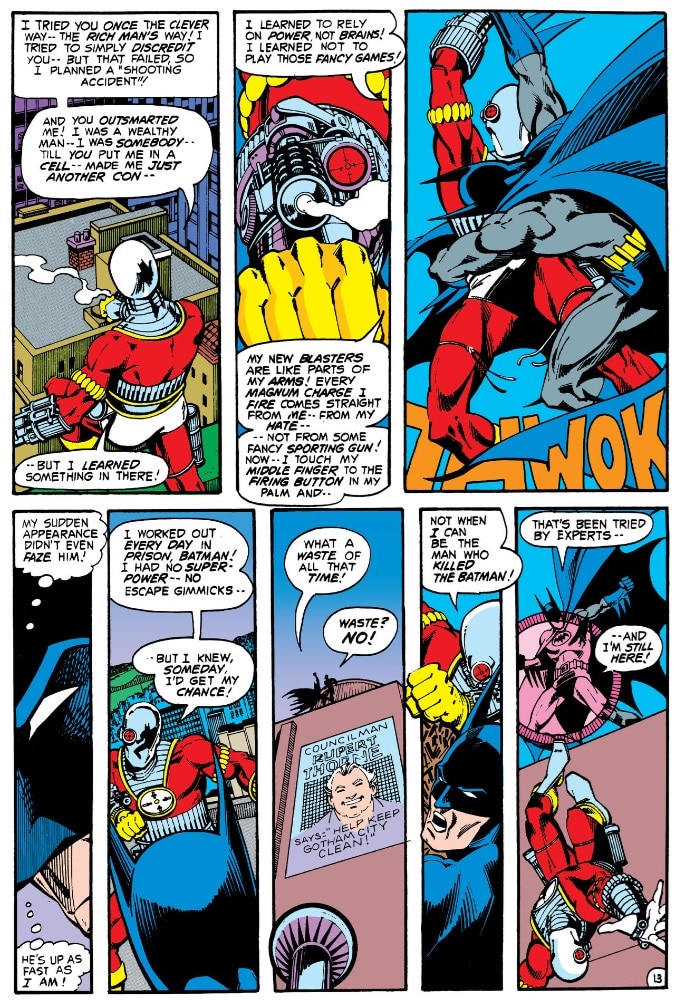
- In Strange Apparitions, Rogers gives Deadshot the costume he’s worn (with some modifications) ever since. It eventually found its way to the big screen in the 2016 Suicide Squad film.
- Batman: The Animated Series would adapt the Hugo Strange issues of Strange Apparitions into “The Strange Secret of Bruce Wayne.” The show also memorably adapted “The Laughing Fish,” and featured Rupert Thorne as a recurring character who would eventually trigger the birth of Two-Face.
Why It’s Worth Your Time:

In the wake of the classic 1966 Adam West-starring Batman TV series, the Dark Knight had, in the eyes of the public, become a bit of a clown. He wasn’t so popular with comic fans either. Artist Neal Adams and writer Denny O’Neil reestablished his reputation in their run of Batman tales in the early ‘70s. But by the latter half of the decade, the character’s popularity had again begun to wane. Strange Apparitions served as a soft reboot, a course correction, and a template for other creative teams to follow. Like many of the great comic runs, it strips its character down to his essence while giving him greater emotional depth. Respectful of the Dark Knight’s roots, bold in the ground it breaks for his future, it’s an essential read for all Bat-fans.
Batman: Strange Apparitions by Steve Englehart and Marshall Rogers can be read in full on DC UNIVERSE INFINITE.
Joseph McCabe writes about comics, film and superhero history for DC.com. Follow him on Instagram at @joe_mccabe_editor.
NOTE: The views and opinions expressed in this feature are solely those of Joseph McCabe and the talent interviewed and do not necessarily reflect those of DC or Warner Bros. Discovery, nor should they be read as confirmation or denial of future DC plans.
